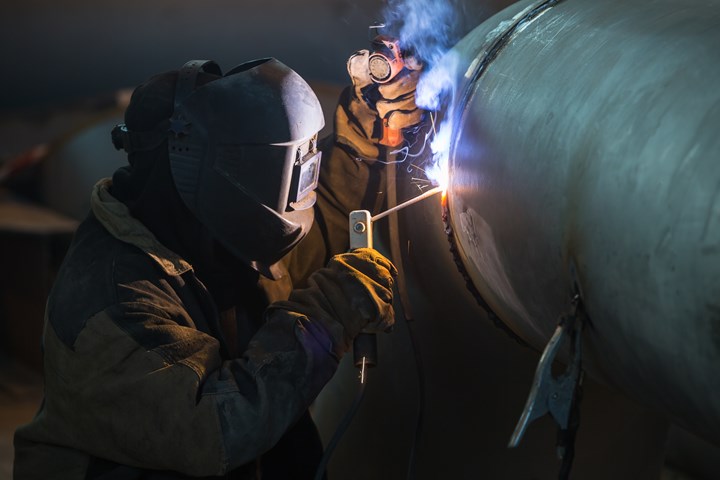Achieving Welding Quality: Unveiling the Keys of WPS Application and Optimization
In the realm of welding, achieving quality is a search that pivots on the precise application and optimization of Welding Treatment Specifications (WPS) By delving right into the vital components, techniques, difficulties, and finest methods connected with WPS, a world of welding quality waits for those that are eager to explore its depths.
Relevance of WPS in Welding
The Relevance of Welding Treatment Specs (WPS) in the welding market can not be overstated, working as the foundation for making certain uniformity, high quality, and security in welding operations. A WPS supplies in-depth directions on how welding is to be executed, consisting of crucial variables such as products, welding processes, joint design, filler steels, interpass and preheat temperatures, welding currents, voltages, travel speeds, and much more. By adhering to a distinct WPS, welders can keep uniformity in their work, resulting in constant weld quality throughout various projects.

Trick Components of WPS
Discussing the indispensable elements of a welding treatment specification (WPS) is essential for recognizing its function in welding operations. One essential element of a WPS is the welding process requirements, which lays out the certain welding procedures to be used, such as gas tungsten arc welding (GTAW) or shielded steel arc welding (SMAW) By including these key elements into the WPS, welding treatments can be standard, guaranteeing high quality, effectiveness, and safety and security in welding operations.
Approaches for WPS Optimization

Secondly, training and certification of welding employees according to the details requirements of the WPS is paramount. Giving comprehensive training programs and making sure that welders are licensed to perform treatments laid out in the WPS can lead to higher top quality welds and reduced rework.
In addition, leveraging innovation such as welding software application and monitoring systems can aid in optimizing WPS. These tools can assist in tracking variables, guaranteeing criteria are within defined limits, and supplying real-time responses to welders, enabling them to make immediate changes for enhanced weld top quality.
Usual Difficulties and Solutions
Dealing with obstacles in executing the methods for WPS optimization can hinder welding operations' performance and quality. One usual challenge is poor training or understanding of the welding procedure requirements (WPS) among the welding team. This can bring about inappropriate implementation of welds, resulting in defects and revamp. To resolve this, detailed training programs ought to be executed to guarantee that all welders are proficient in applying and interpreting More Info WPS precisely.
An additional difficulty is the lack of proper documents and record-keeping, which is necessary for WPS optimization. Without clear records of welding parameters, products utilized, and examination results, it comes to be challenging to determine locations for enhancement and make sure consistency in welding procedures. Applying a robust documentation system, such as digital welding monitoring software program, can assist streamline record-keeping and promote data analysis for continual improvement.
In addition, inconsistent welding devices calibration and maintenance can pose a significant challenge to WPS optimization. Normal tools checks, calibration, and upkeep schedules ought to be stuck to strictly to guarantee that welding specifications are accurately regulated and maintained within the specified resistances (welding WPS). By attending to these common challenges with proactive options, welding procedures can boost effectiveness, quality, and general welding excellence
Ideal Practices for WPS Execution
To ensure successful WPS implementation in welding procedures, adherence to industry criteria and meticulous interest to detail are extremely important. When starting WPS application, it is critical to start by completely comprehending the particular welding demands of the project. This involves a detailed testimonial of the welding treatment specifications, products to be welded, and the environmental conditions in which the welding will certainly happen.
As soon as the requirements are clear, the next step is to select the appropriate welding treatment that lines up with these specifications. This includes getting in touch with the pertinent codes and criteria, such as those provided by the American Welding Society (AWS) or the International Organization for Standardization (ISO), to guarantee compliance and quality.
Additionally, documenting the whole WPS execution procedure is important for traceability and quality control. In-depth records ought to be kept regarding welding parameters, material prep work, preheat and interpass temperatures, welding consumables used, and any type of discrepancies from the original treatment. Routine audits and reviews of the WPS can help identify areas for improvement and make certain recurring optimization of the welding procedure.


Verdict
In conclusion, the execution and optimization of Welding view it now Treatment Requirements (WPS) is critical for accomplishing welding excellence. By comprehending the crucial elements of WPS, carrying out reliable techniques for optimization, attending to common challenges, and complying with ideal practices, welders can make certain high-grade welds and secure working problems. It is critical for specialists in the welding sector to focus on the proper execution of WPS to enhance general welding efficiency and accomplish desired outcomes.
The Significance of Welding Procedure Specs (WPS) in the welding industry can not be overstated, serving as the foundation for guaranteeing uniformity, quality, and safety in welding operations. A WPS provides detailed directions on exactly how welding is to be carried out, consisting of crucial variables such as materials, welding procedures, joint design, filler metals, interpass and preheat temperature levels, welding currents, voltages, travel speeds, and extra. One critical facet of a WPS is the welding procedure spec, which details the specific welding processes to be made use of, such as gas tungsten arc welding (GTAW) or shielded steel arc welding (SMAW) By integrating these essential elements right into the WPS, welding treatments can be standardized, making sure Recommended Reading high quality, effectiveness, and safety in welding operations.
It is essential for experts in the welding industry to prioritize the proper application of WPS to improve overall welding performance and achieve wanted end results.